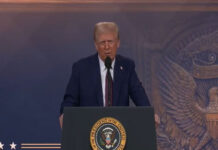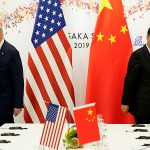By – Mr. Mahendra Jajoo, CIO, Fixed Income, Mirae Asset Investment Managers India
We are in living in interesting times indeed. Recently, in a call with our partners, we conducted a poll asking them whether the RBI was likely to cut rates, keep them unchanged or raise them. In a fascinating response, while an equal number of participants felt that rates would be kept unchanged or cut, there was a small group that believes that a rate hike may be in the offing. Just goes to show how in this prevailing situation there are no easy answers.
Earlier this year, when the Covid-19 pandemic first struck, the Reserve Bank of India’s (RBI) primary focus was to ensure financial stability and confidence in the markets. Having successfully achieved its primary target,it may now switch focus to more conventional economic indicators like inflation, fiscal deficit and currency volatility even as the government works towards gradually lifting lockdowns to restore normalcy.
For the past four months or so, inflation has been above the RBI threshold of 6%. While assessing the future trajectory of inflation,we need to consider two essential factors. One, inflation in the previous months was largely due to supply chain disruptions. With the economy gradually opening up, logistics difficulties should disappear very soon solving this bit of the problem. Secondly, a normal monsoon should help to keep food prices that hold highest weightage in the inflation basket, in check. One could conclude therefore that inflation could come down gradually over the next few quarters.
However, even as it addresses the inflation issue, of greater concern at this stage is the fact that growth is expected to contract in the coming quarters. While the RBI may choose to take a pause on rates cuts, it will want to ensure lower interest rates to support growth. This, it could do through other non-monetary tools such as OMOs or Operation Twist.
What then does this mean for the small investors? What should they do in such a scenario? I would suggest that since interest rates are expected to remain range-bound and at lower levels, investors should continue to invest in debt funds based on their investment horizon and risk preference, but with a long-term approach. As a general observation, long term investments where investors have the patience with volatility to stick through at least one complete interest rate cycle, tend to do well. They could even consider medium-long term funds like Banking PSU funds, dynamic bond funds,or short-term funds. The important thing is to be patient and stick to the fundamentals and high credit quality.
Recently, there was a brief panic and kneejerk reaction after a section of investors had an unpleasant experience with relatively high-risk funds investing in aggressive credits, resulting in some talk about negativity around the category. Overall, however, debt funds continue to enjoy the confidence of investors. This is demonstrated by the nearly all-time high AUM of debt funds in aggregate. AMFI data shows that in July 2020, Debt MFs saw an inflow of Rs 91,392 crore, with most categories receiving an inflow barring a few like credit risk funds. The data reflects the confidence in debt funds. Similarly,it shows that investors are being cautious and staying away from the credits.
The current market volatility only highlights the importance of asset allocation more than ever. To repeat, investors should diversify according to their risk profile across the asset classes. Within debt funds too, there is a range of categories across time horizons to suit all kinds of investment needs. And, if one is still unsure, SIP is always a good option to spread investments over a period of time and take advantage of averaging.
To Listen to this News click on the play button.












